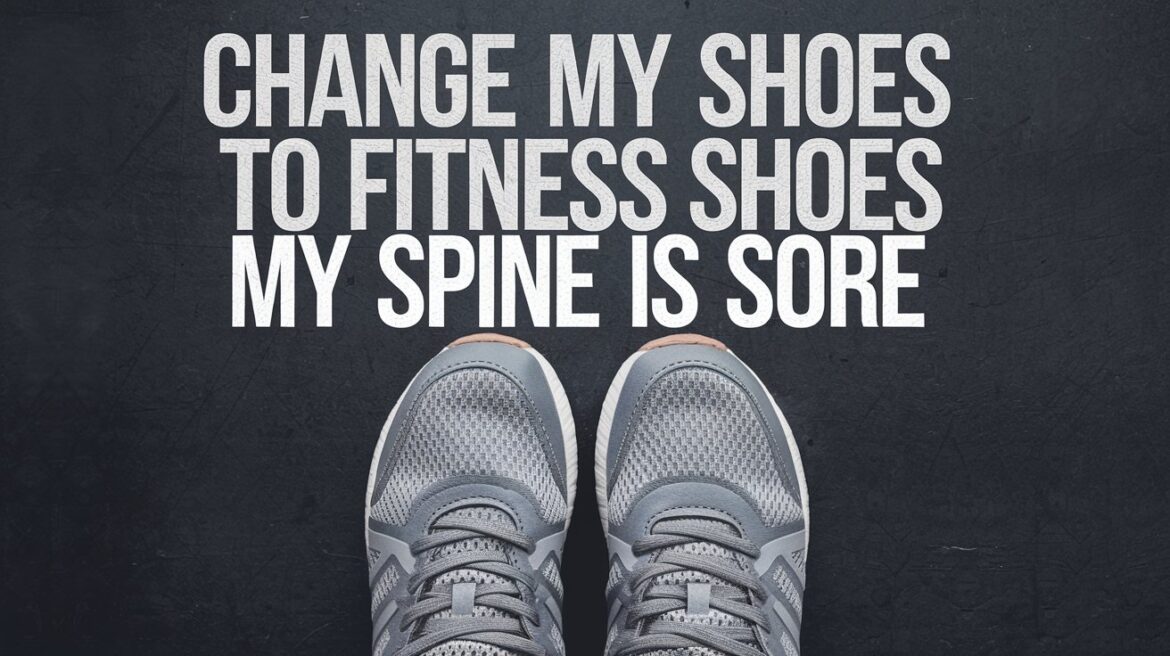Back pain can be a real nuisance. It can disrupt your daily activities and lower your quality of life.
One common but often overlooked cause of back pain is footwear. The shoes you wear can significantly impact your spinal health.
If you’re experiencing spine soreness, it might be time to change your shoes. Specifically, you might want to consider switching to fitness shoes.
Fitness shoes are made to give your feet support and comfort.
They can help keep your posture straight and your spine aligned. This can lower the chance of back pain.
In this guide, we’ll explore the link between footwear and back pain. We’ll also provide tips on choosing the best fitness shoes for sore spine.
So, if you’re ready to say goodbye to back pain, keep reading. Your journey to a healthier spine starts here.
The Link Between Footwear and Spinal Health
Footwear plays a crucial role in spinal health. Poor shoe choices can lead to back pain and spinal issues over time. Many people underestimate how much impact their shoes have on their spine.
Shoes can impact your spine based on how well they support and align your feet.
Proper shoes promote good posture, keeping your spine aligned. This minimizes strain and reduces the risk of back pain.
On the other hand, improper footwear can cause serious problems. Here are some potential issues:
- Increased pressure on the spine
- Misalignment of the spine
- Poor posture over time
- Heightened risk of back pain
The foot and spine connection lies in the shoe’s structure.
Shoes that lack good arch support or cushioning are often a problem.
They fail to absorb the shock of walking, which is then transferred to the spine.
Moreover, the heel height of your shoes matters. High heels can force you into unnatural postures, leading to back pain. Shoes with flat soles like flip flops lack proper support, affecting spinal health.
Choosing the right pair of shoes is not just about style. It’s about ensuring your spinal health and well-being. Picking the right shoes can lead to a pain-free life and improved overall health.
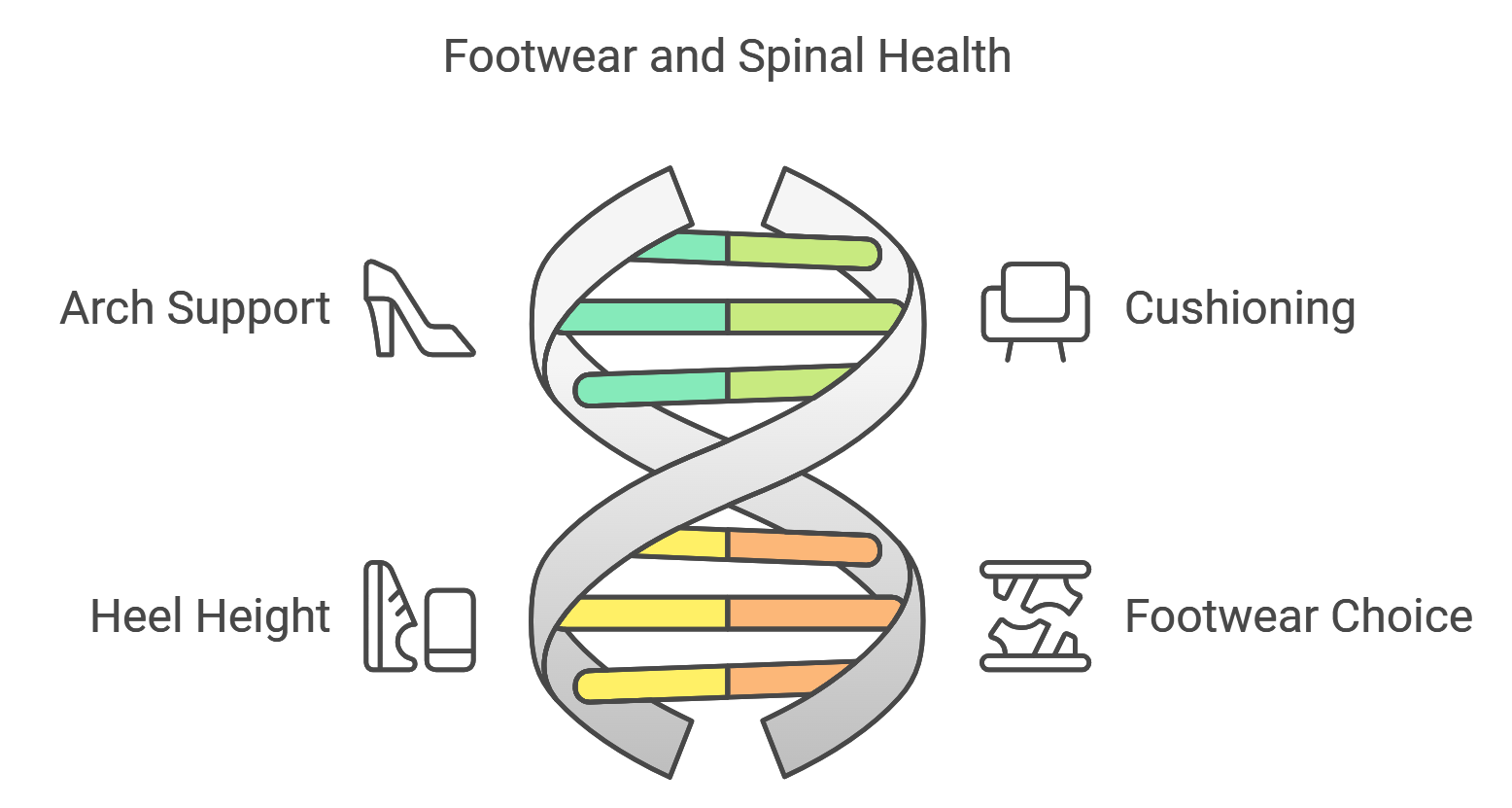
Identifying the Culprits: Shoes That May Cause Back Pain
Not all shoes are created equal when it comes to spinal health. Some shoes can indeed contribute to back pain. It is essential to identify these types to make better choices.
Several types of shoes frequently contribute to spinal discomfort:
- Dress shoes with high heels
- Flip flops with flat soles
- Shoes lacking arch support
- Ill-fitting shoes that impact posture
Often, the design and structure of these shoes fail to offer necessary support. For example, excessive heel height can throw off balance and posture, resulting in back pain.
Additionally, shoes without proper arch support cause misalignment.
This misalignment puts extra strain on the spine and can cause more pain.
Taking a closer look at the traits of each shoe type is crucial for those experiencing back pain.
Dress Shoes and Spinal Stress
Dress shoes often come with elevated heels, which pose a risk. High heels change your center of gravity, causing your back to arch more than usual. This can lead to spinal misalignment over time.
Moreover, tight-fitting dress shoes can also restrict natural foot movement.
When your movement is limited, it changes how you walk. This can put extra stress on your spine.
Over time, this can lead to chronic back issues.
Women are typically more affected due to the prevalent use of heels in fashion. However, men’s dress shoes with improper arch support or no heel can also be problematic.
Choosing dress shoes with low heels or arch support can help reduce stress on your spine.
The Flip Flop Flaw: Lack of Support and Back Pain
Flip flops are light and convenient but often lack support.
Most shoes do not support the arch of your foot. This can leave your feet without enough support.
Their flat soles do not absorb shock well. This results in the impact traveling up to your spine, often causing discomfort or pain. Long-term use can lead to serious spinal issues if not addressed.
Additionally, flip flops are often loose-fitting. This causes your toes to grip tightly with every step, affecting your walking pattern. Such a shift can lead to stress on your back muscles, increasing the risk of back pain.
Choosing the Right Fitness Shoes for a Sore Spine
Selecting the correct fitness shoes can significantly ease a sore spine.
The first step is to know what is important for a healthy back.
Fitness shoes should primarily offer good arch support. Proper arch support maintains foot alignment, leading to reduced back stress. Cushioning is equally crucial to absorb shocks.
When at a shoe store, consider:
- Trying on multiple types of shoes
- Walking around to test comfort and fit
- Checking for wide toe boxes to ensure toe comfort
Furthermore, it’s essential to acknowledge the shoe’s weight. Lighter shoes often reduce strain on your back during activities.
Check how flexible your walking shoes are. Flexible soles help your feet move naturally.
Pay attention to your body’s feedback when trying new shoes. If a pair of shoes doesn’t feel right, it might not be right for your back health. Always prioritize comfort over aesthetics.
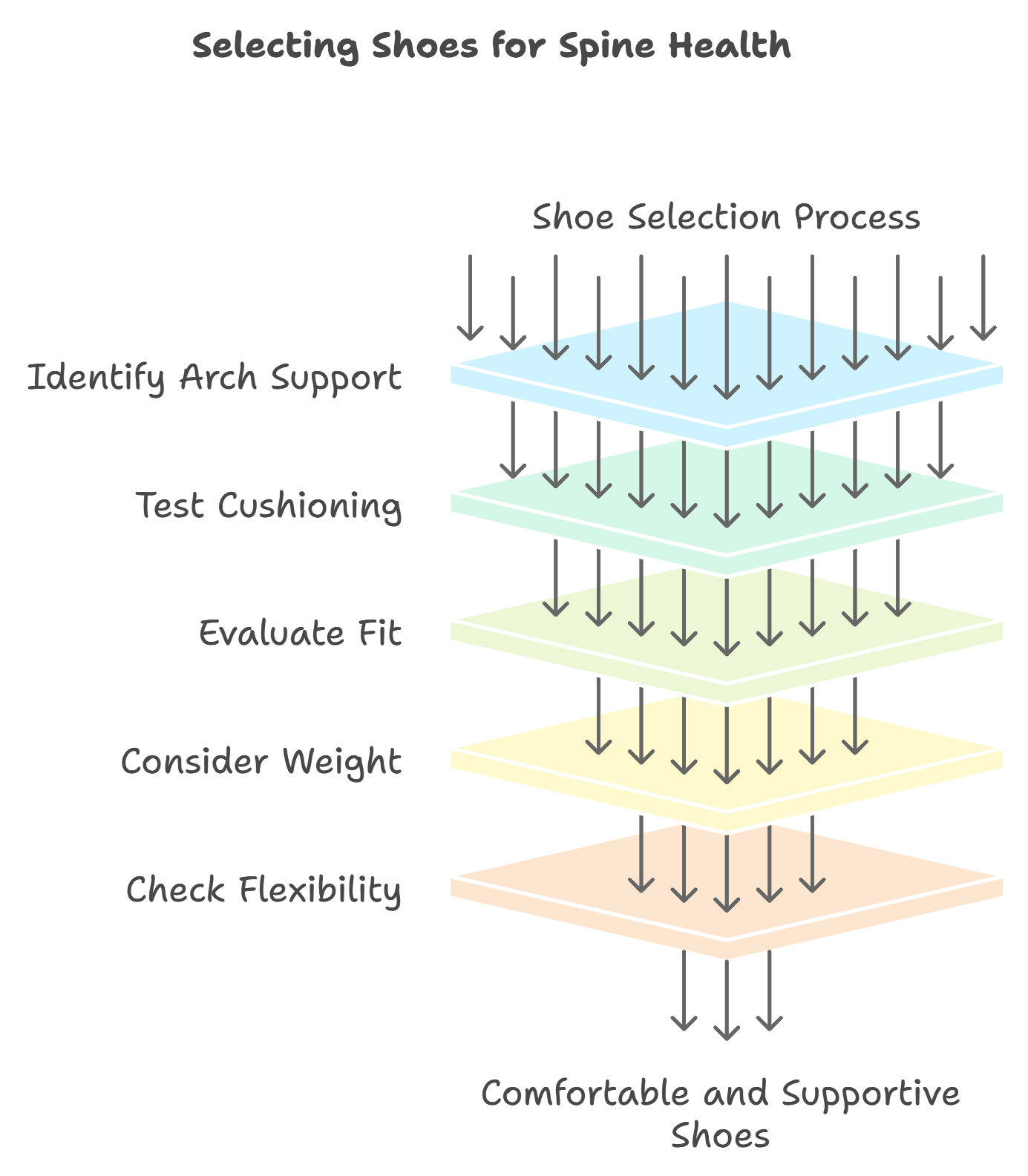
Key Features of Back-Friendly Fitness Shoes
Back-friendly fitness shoes include certain fundamental features that can alleviate pain. First, a good fitness shoe should have a proper heel. A cushioned heel helps reduce impact, making each step gentler.
The shoe’s midsole plays a crucial role.
A good midsole helps spread pressure evenly. This can reduce strain on the spine.
Opt for shoes with removable insoles, which allow room for custom orthotics if necessary.
Additionally, look for shoes with a proper closure system.
Laces or straps keep your shoes tight. This stops your feet from moving too much and gives you better support.
These features collectively ensure back pain relief and support.
The Importance of Arch Support and Cushioning
Arch support in fitness shoes is vital.
It keeps your feet aligned and reduces strain on the back.
Shoes with inadequate arch support cause foot collapse, leading to increased pressure on your back.
Cushioning helps reduce the force of impacts.
When your shoes absorb shock, it lessens the impact on your joints and spine. This, in turn, reduces the risk of aggravating spinal discomfort.
Finally, shoes with adequate cushioning facilitate smoother motion.
This helps improve posture. It makes it easier to keep the spine aligned.
Arch support and cushioning are important for reducing back pain.
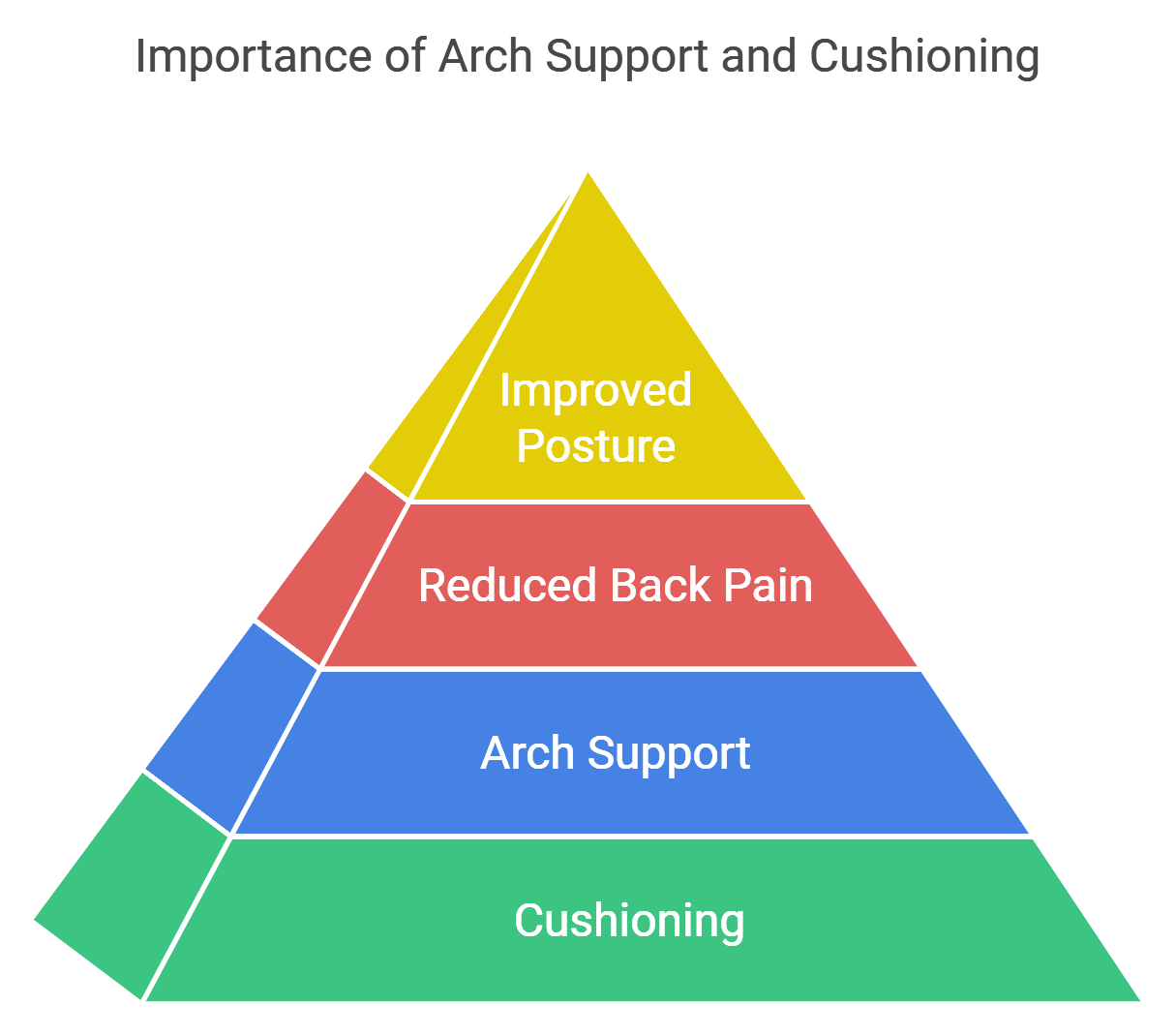
Transitioning to Fitness Shoes: Steps for a Healthier Spine
Switching to fitness shoes can be gradual. Transitioning slowly helps your body adapt to new support levels. Start by wearing your fitness shoes for short periods.
Increase the wearing time gradually. Allow your feet and spine to adjust. Listen to your body during this transition.
Here’s how to ease this change:
- Start with short walks
- Wear your fitness shoes at home initially
- Alternate with your old shoes during work breaks
Be patient and monitor changes in comfort and pain levels. This method helps avoid sudden back stress.
When to Consult a Sports Medicine Specialist
If back pain persists despite changing shoes, consult a sports medicine specialist.
They can find the main problems and suggest solutions just for you.
Professional advice helps make sure your shoe choice fits your spinal health needs.
Maintaining Good Posture and Spinal Alignment with the Right Shoes
Achieving good posture is crucial for spinal health.
The right shoes are important for keeping your spine in line.
Proper footwear can reduce strain on your back.
Good shoes offer stability and balance. They help distribute weight evenly across your feet. This distribution supports the natural curve of your spine.
When wearing shoes that promote good posture, you’ll notice improved comfort. Walking becomes more efficient with less effort. This can decrease the overall risk of back pain.
Incorporate posture-friendly habits into your daily routine. Combine them with supportive shoes. You’ll likely see a positive impact on your spinal health.
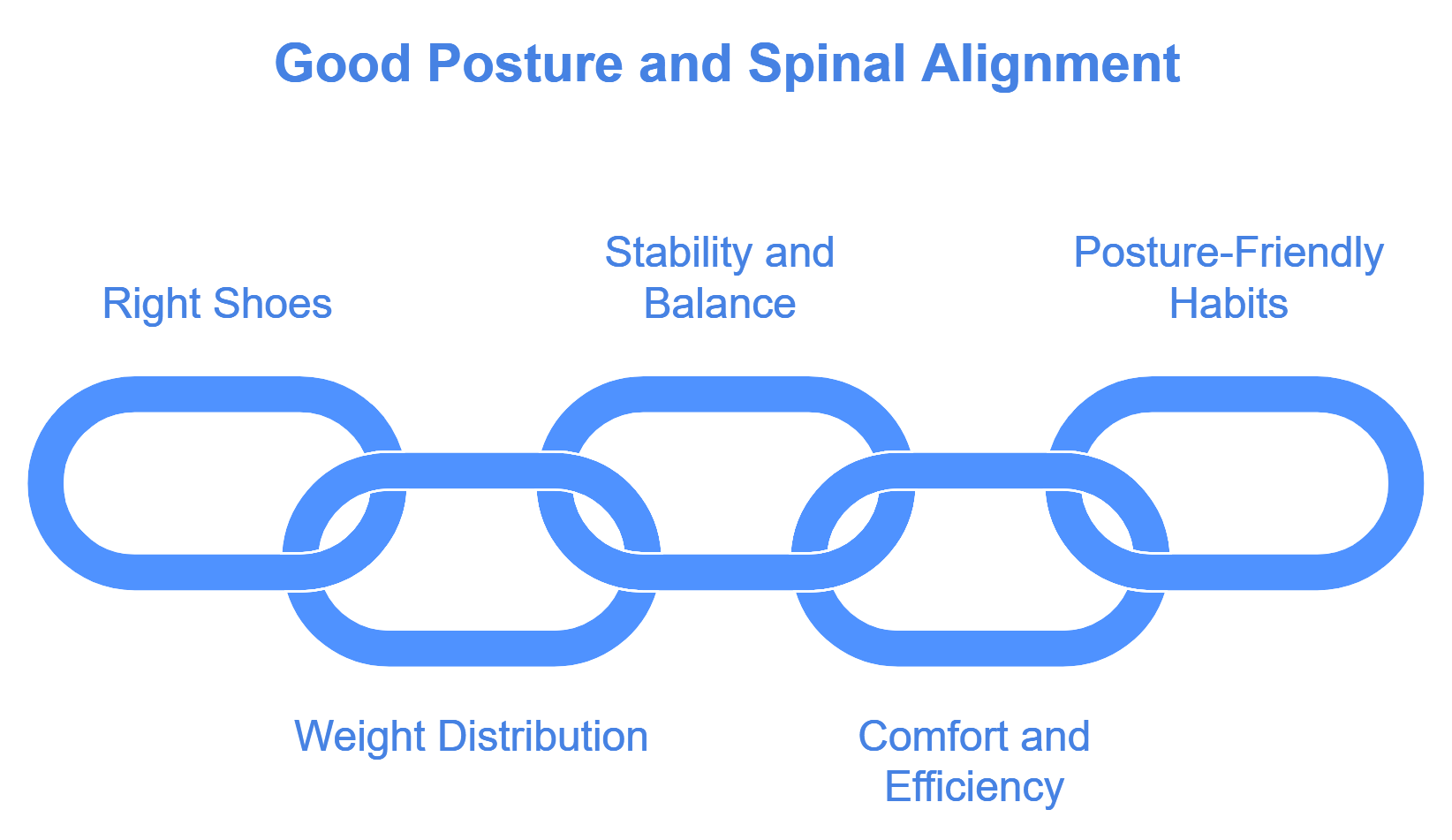
Conclusion: Embracing Change for Spinal Relief
Switching to fitness shoes can significantly reduce back pain.
Your spine gets better support and alignment.
Embrace the change for better comfort and overall health. Choosing the right shoes paves the way for a pain-free and active lifestyle.

